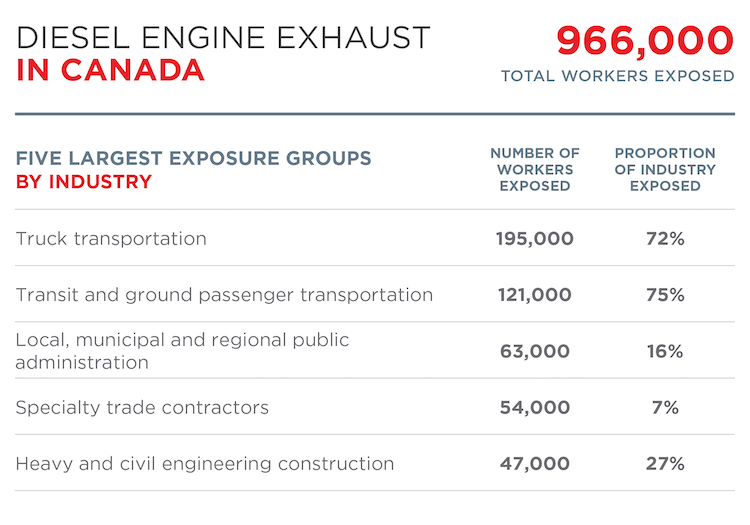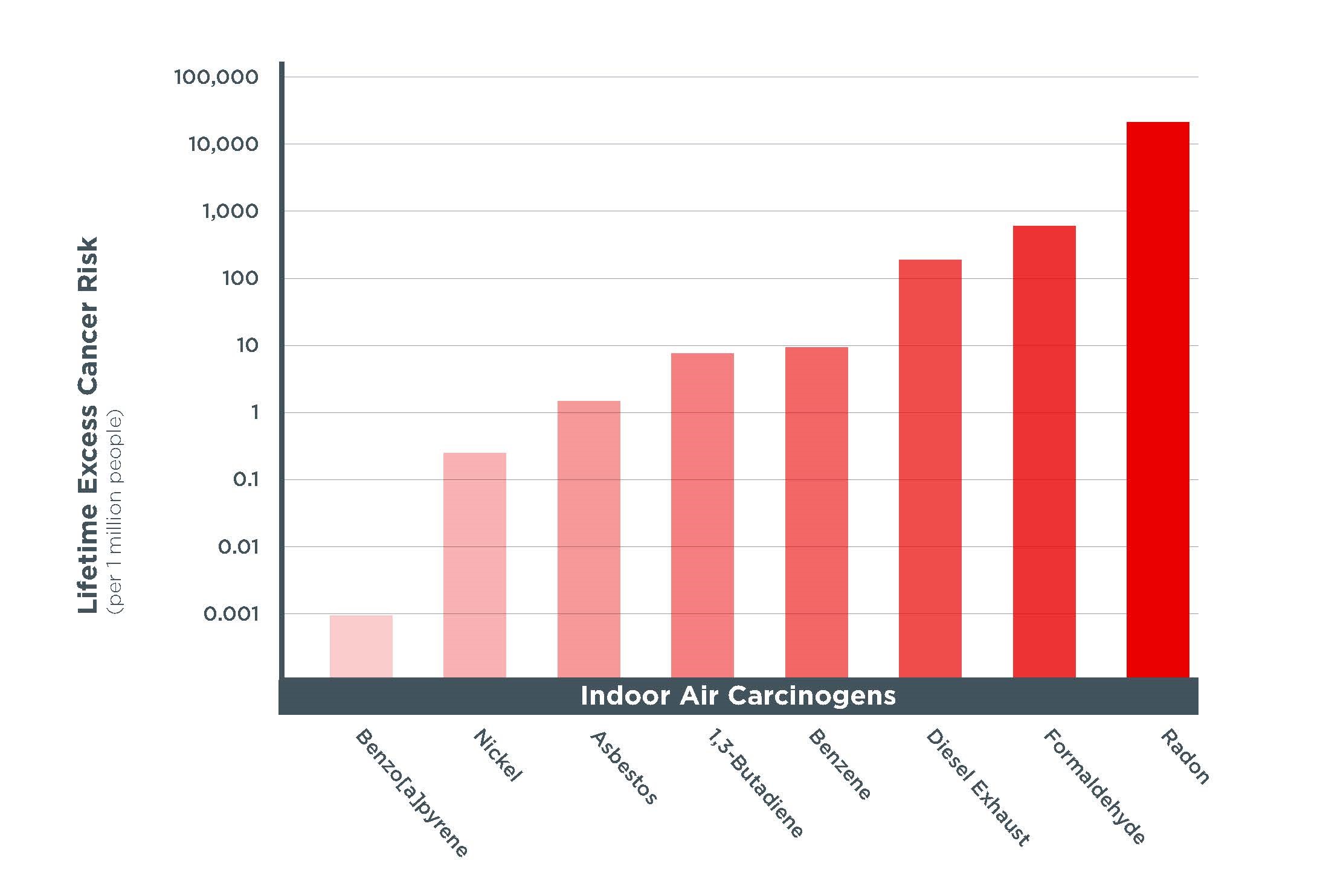Occupational and environmental exposures to diesel engine exhaust
CAREX Canada has identified diesel engine exhaust, which is a complex mixture of gases and particulates that are produced when diesel fuel combusts in a compression ignition engine, as a high priority for exposure reduction in Canadian workplaces. This is because almost one million Canadians are exposed to diesel engine exhaust at work.[1] The resulting impact on cancer is high; results from the Burden of Occupational Cancer project show that approximately 560 lung cancers, and possibly 200 urinary bladder cancers, are attributed to occupational diesel engine exhaust exposure each year.[2]
Furthermore, CAREX Canada’s environmental estimates indicate that levels in both indoor and outdoor air result in increased risks of cancer at a population level, making diesel engine exhaust the third highest priority indoor air exposure.[3]
CAREX Canada’s resources on exposure to diesel engine exhaust
CAREX Canada has developed the following resources to help characterize Canadians exposures to diesel engine exhaust:
Profile: Our carcinogen profile for diesel engine exhaust provides general information about diesel exhaust and why it was classified as carcinogenic, lists the regulations and guidelines related to diesel exhaust in Canada, and describes how exposure takes place in the workplace and community. The diesel engine exhaust profile is available here.
Webinar: Diesel exposure in workplaces: This webinar, presented in partnership with the Occupational Cancer Research Centre and the Ontario Occupational Disease Action Plan, highlights the importance of diesel engine exhaust as a workplace hazard and explores ways that it can be assessed and controlled in the workplace.
Environmental exposure estimates: Our estimates use lifetime excess cancer risk as an indicator of Canadians’ exposure to known or suspected carcinogens in the environment. Risk estimates for outdoor and indoor air carcinogens show that diesel engine exhaust results in increased risks of cancer at a population level. Diesel engine exhaust is the third highest priority indoor air exposure in Canadian settings. The full estimate is available here.

CAREX Canada’s resources on the setting of an occupational exposure limit (OEL) for diesel engine exhaust in Canada
Setting an occupational exposure limit for diesel engine exhaust in Canada: This report examines the regulatory landscape for occupational diesel engine exhaust exposure in Canada, identifies key barriers and facilitators to setting and complying with occupational exposure limits, and recommends an OEL to protect worker health. Overall, it highlights the variability in occupational exposure limits that have been adopted in Canada for constituents of diesel engine exhaust and finds that few jurisdictions in Canada outside of the mining industry have an OEL for diesel engine exhaust, while none have adopted an OEL that reflects the current state of knowledge. CAREX Canada recommends that Canadian jurisdictions move towards an OEL based on elemental carbon of 20 µg/m3 for the mining industry and 5 µg/m3 for other workplaces to protect worker health. The report is available here (PDF).
Analysis of proposed policy to create an occupational exposure limit for diesel engine exhaust in Ontario: This analysis was conducted to better understand how the Ontario diesel engine exhaust OEL policy was brought forward and developed, to characterize the policy window for setting an OEL in Ontario, and to identify if a similar opportunity exists in other jurisdictions, specifically Alberta. Overall, it highlights how this policy proposal followed policy development models, and the importance of the role of the policy entrepreneur and policy maker. The report is available here (PDF).
Sources
Subscribe to our newsletters
The CAREX Canada team offers two regular newsletters: the biannual e-Bulletin summarizing information on upcoming webinars, new publications, and updates to estimates and tools; and the monthly Carcinogens in the News, a digest of media articles, government reports, and academic literature related to the carcinogens we’ve classified as important for surveillance in Canada. Sign up for one or both of these newsletters below.
CAREX Canada
School of Population and Public Health
University of British Columbia
Vancouver Campus
370A - 2206 East Mall
Vancouver, BC V6T 1Z3
CANADA
As a national organization, our work extends across borders into many Indigenous lands throughout Canada. We gratefully acknowledge that our host institution, the University of British Columbia Point Grey campus, is located on the traditional, ancestral and unceded territories of the xʷməθkʷəy̓əm (Musqueam) people.




